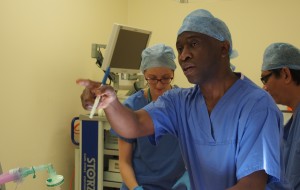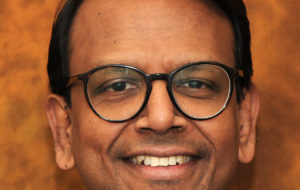Otoplasty/ pinnaplasty
Otoplasty or pinnaplasty is an operation that is usually done to set back prominent ears closer to the side of the head, but can also be used to correct overly large ears.
What happens during the operation
At the initial consultation, your surgeon will evaluate the ears and establish what is required to produce the desired shape. There are several techniques that can be used to reshape and set back prominent ears, so the most appropriate ones for the individual will be discussed.
A technique that is often used involves the removal of a small ellipse of skin from behind the ear to expose the ear cartilage and then the surgeon can reshape the ear cartilage either using stitches alone or a combination of stitches and scoring of the cartilage to create a natural looking fold to the ear and a normal position in relation to the head.
Otoplasty usually takes between one and two hours to perform although more complicated procedures may take longer and your surgeon will be able to discuss with you the likely length of the operation.
In the United Kingdom, otoplasty is usually performed under a general anaesthetic. However, some surgeons may prefer to use local anaesthesia especially with an adult patient. Otoplasty can be carried out as a day case procedure but occasionally your doctor may recommend an overnight stay.
Aftercare and recovery
Most patients will be up within a few hours of surgery but you will be recommended to stay in hospital until the effects of the anaesthesia has worn off. The patient’s head is usually wrapped in a head bandage immediately after the surgery to promote the best moulding and healing.
The ears may throb or ache for a few days but this operation should not be particularly painful and only simply painkillers are usually required. The ears may feel a little numb after the operation but this usually settles within a few weeks.
The head bandage is usually removed five to seven days after the surgery and your surgeon will recommend using some form of head band (tennis sweat band) at night to make sure that there is no pulling forward of the ears when asleep. Stitches from behind the ear are usually removed at the same time as the head dressing.
Most children can go back to school about seven days after the surgery but should be careful with playground activity and should avoid contact sport for six weeks. Adults can usually go back to work after seven days. It is difficult to get perfectly matched ears and it is important that you discuss the procedure and your expectations with the surgeon before the surgery to try to ensure that you end up with the result that you are pleased with.
Risks and complications
All surgical procedures carry risks so it’s important that as well as the benefits of cosmetic procedures you are also fully aware of any complications that may arise.
When otoplasty is performed by a qualified experienced surgeon, complications are infrequent and usually minor. However, as with any operation there are risks associated with this type of surgery. A small percentage of patients may develop a blood clot under the skin of the ear. This may dissolve away naturally or occasionally may need to be removed by your surgeon with a needle. If this blood clot is large and left untreated, it can cause damage to the underlying cartilage which will produce an unnatural shape to the ear (cauliflower ear).
A similar situation can occur if patients develop an infection in the cartilage. Such infections are usually treated with antibiotics but again may require drainage of the infected area.
The scar behind the ear usually heals extremely well but may in some patients become lumpy or overgrown which would then require further correction.
To enquire about our services or to make an appointment call us on (03033) 302956 or make an online enquiry
Who will perform this procedure?

Mr Augustine Akali
Consultant plastic surgeon offering plastic, cosmetic and reconstructive surgery.

Mr Ganapathy Dhansekar
Ear, nose and throat specialist at Scunthorpe hospital.
Where can I have this procedure performed?

Goole and District Hospital
Goole hospital is where all of our cosmetic procedures are carried out, although you can choose to have your clinic consultations at Scunthorpe or Grimsby hospitals if this is more convenient.
How much does it cost?
| Intial Constulation Fee | From £150 |
| Unilateral | from £2576 |
| Bilateral | from £3343 |
Quality of care
From the moment we receive your request for a consultation through to the completion of your treatment we offer the highest standards of care.
Affordability
We offer a high quality service at competitive prices. As we work out of NHS hospitals we are able to offer procedures that are more affordable than our competitors
FAQ
From 'what's included in the price' to 'how to pay' see some of the questions asked by our patients and the answers.